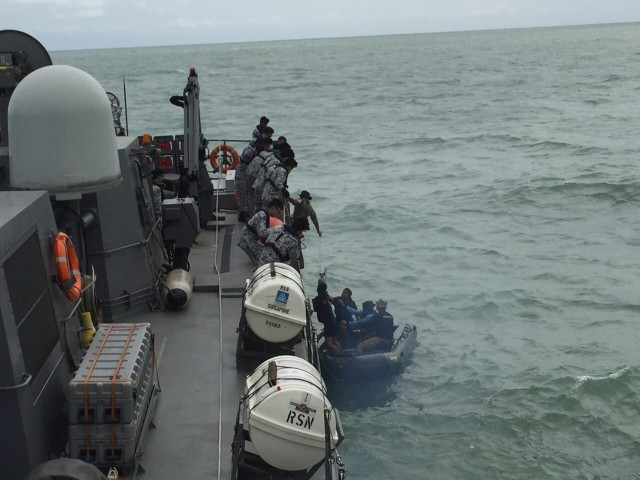Indonesian divers recover bodies from near crashed AirAsia jet fuselage
Six bodies found near fuselage but unable to enter wreckage where most victims are believed to be trapped: official

PHOTO: REUTERS
Days of rough weather and poor underwater visibility have hampered navy divers' efforts to recover bodies and lift the main part of the plane off the sea bed.
"It was very dark, visibility was very limited so our diving teams could not enter," Rear Admiral Widodo, commander of the navy's western fleet, told reporters aboard the warship KRI Banda Aceh.
"However we still predict we can evacuate all the bodies from there."
Widodo added rescuers expected to attach giant air bags to the fuselage to lift it to the surface by Friday.
Indonesia AirAsia Flight QZ8501 lost contact with air traffic control in bad weather on December 28, less than halfway into a two-hour flight from the Indonesian city of Surabaya to Singapore.
There were no survivors among the 162 people on board the Airbus A320.
A multinational search and rescue operation has recovered 59 bodies so far and located both "black box" flight recorders, which will provide clues as to why the plane crashed.
The cause of AirAsia's first fatal crash is not yet known, though investigators have ruled out foul play.
Transport Minister Ignasius Jonan on Tuesday told a parliamentary hearing that radar data showed the plane had climbed faster than normal in its final minutes, and then stalled.
Three days after the crash a source familiar with initial investigations had told Reuters the plane appeared to have made an "unbelievably steep climb" that may have pushed it beyond its performance envelope.
The National Transport Safety Committee (NTSC), which is responsible for the crash investigations in Indonesia, is set to release some initial findings next week, but its full preliminary report will not be made public.
The final report on the investigation, which will be made public, must be filed within a year.


















COMMENTS
Comments are moderated and generally will be posted if they are on-topic and not abusive.
For more information, please see our Comments FAQ